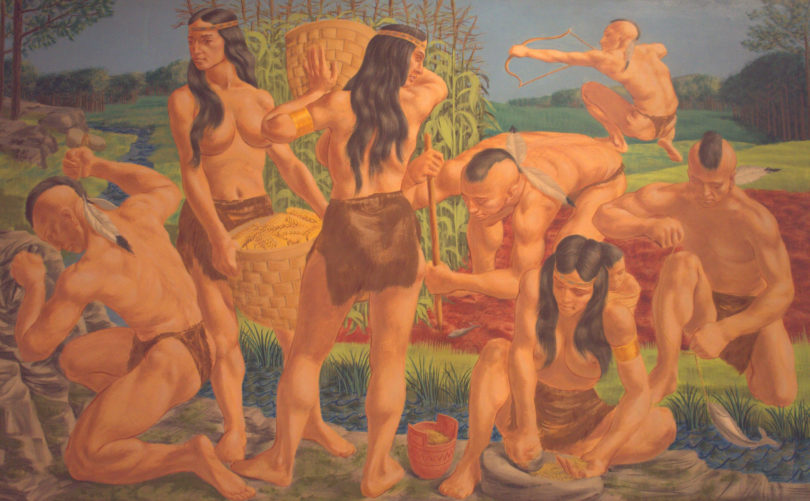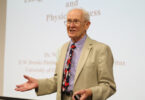Athens, Ga. – The Georgia Museum of Art at the University of Georgia will soon display four controversial murals that were removed from the Georgia Department of Agriculture’s building in downtown Atlanta last year. In 1956, George Beattie, an Atlanta-based artist, painted a series of eight murals that hung at the department until 2011. The four that will be on display at the museum Aug. 1-Jan. 7 address the state’s history of agriculture, beginning with a representation of the American Indians who originally lived in the region and two that address slavery.
When newly elected agriculture commissioner Gary Black took office, he decided to remove the murals from the walls of the building and said, “I think we can depict a better picture of agriculture.”
Rather than allow the works to languish in government storage, the museum offered to take them and mount the display to promote discussion about what the murals portray, how they portray it and why they are controversial. Chief GMOA curator and curator of American art Paul Manoguerra said they are an important component of the state’s art history as well as of its political one.
“As the official state museum of art and as an academic institution, the Georgia Museum of Art believes it is important to preserve this aspect of Georgia’s history,” said Manoguerra. “The murals present one artist’s attempt to address the complex history of agriculture in our state in 1956.”
Undeniably idealized, the figures of the slaves are stoic and muscular, bearing more resemblance to the work of Michelangelo than to reality. The faces of all the people the murals take as their subjects are generalized, and the American Indians (both men and women) wear only loincloths, exposing and sexualizing their bodies. One that focuses on the founding of the state of Georgia, as evident from its inclusion of James Oglethorpe, relegates American Indians to background material, literally receding from view.
In an effort to contextualize the murals, the museum has produced a series of short videos, in which academics examine the works’ problematic approach to sensitive issues. James Cobb, Spalding Distinguished Research Professor in the UGA department of history; Laura Adams Weaver, an instructor in the UGA Institute of Native American Studies; Valerie Babb, professor of English and African American studies and director of the Institute for African American Studies; and Manoguerra lent their talents to the effort, discussing the context for Beattie’s murals and the complex historical and cultural issues they raised in the 1950s and today. Those videos will be mounted next to the murals for visitors to watch and available on the museum’s YouTube page.
“I don’t think you learn anything by hiding history,” said Babb. “I think it’s very important to have conversations about why these panels were painted in the first place, as well as why they were taken down and what that reveals about the way we as a culture and a society have changed.”
Born in Ohio, Beattie studied at the Cleveland Institute of Art and was trained in a social realist style. He moved to Atlanta in 1948, where he taught at the High Museum of Art, Georgia Tech’s School of Architecture and Georgia State University. He served as director of the Georgia Council for the Arts and created other murals in the Federal Post Office in Macon that also focus on regional history. Far from unknown, Beattie received a Fulbright award and had his work included in exhibitions at the Metropolitan Museum of Art, the Whitney Museum of Art and the Smithsonian Institution.
The W. Newton Morris Charitable Foundation and the Friends of the Georgia Museum of Art will sponsor this exhibition.
Museum Information
Partial support for the exhibitions and programs at the Georgia Museum of Art is provided by the Georgia Council for the Arts through appropriations of the Georgia General Assembly. The council is a partner agency of the National Endowment for the Arts. Individuals, foundations and corporations provide additional museum support through their gifts to the University of Georgia Foundation. The Georgia Museum of Art is located in the Performing and Visual Arts Complex on the East Campus of the University of Georgia. The address is 90 Carlton Street, Athens, Ga. 30602-6719. For more information, including hours, see http://www.georgiamuseum.org or call 706/542-GMOA (4662).
##







